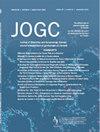Attitudes Towards Pooled Surgical Waitlists and Group Referral in Urogynecology: Higher Contemporary Acceptance Among Patients
IF 2.2
Q2 OBSTETRICS & GYNECOLOGY
引用次数: 0
Abstract
Objectives
Consolidation of individual surgeon waitlists into a collective pool has been implemented in many public systems to optimize resource use and ensure equitable access to surgical care. Acceptance of such strategies was noted to be limited in urogynecology. We aimed to evaluate patient acceptance of pooled surgical waitlists in a contemporary population and compare results to a historical pre-COVID-19 pandemic.
Methods
This cross-sectional study surveyed patients awaiting urogynecologic surgery after signing consent from 2022 to 2023. All responses were collected anonymously. Patient attitudes toward the potential for a pooled surgical waitlist were explored. We compared survey results to data from a historical cohort of published data from 2019 (N = 176) to evaluate whether there was a change in attitudes.
Results
Of the 101 patients awaiting surgery who completed the survey, 42% (42/101) reported that they would like to be offered the option of having surgery done by the next available skilled surgeon, rather than wait for their own surgeon, and this did not differ by patient symptom severity (P = 0.52). Overall, 53% (54/101) of patients reported feeling comfortable being referred to the first available urogynecologist for both consultation and follow-up visit. More respondents agreed with the pooled surgical waitlist option than in the historical cohort (42% vs. 19%, P < 0.001).
Conclusions
There appears to be greater acceptance of pooled surgical waitlists in a contemporary analysis, potentially supporting such a strategy in future urogynecology populations.
对联合手术候补名单和泌尿妇科小组转诊的态度:当代患者接受程度较高。
目的:在许多公共系统中,为了优化资源利用并确保公平获得外科护理,已将个别外科医生候补名单整合为一个集体池。在泌尿妇科,对这种策略的接受程度是有限的。我们的目的是评估当代人群中患者对合并手术候补名单的接受程度,并将结果与历史上的covid-19大流行前的结果进行比较。方法:本横断面研究调查了2022-2023年签署同意后等待泌尿妇科手术的患者。所有的回答都是匿名收集的。探讨了患者对合并手术候补名单的态度。我们将调查结果与2019年发表的历史队列数据(N = 176)进行了比较,以评估态度是否发生了变化。结果:在完成调查的101名等待手术的患者中,42%(42/101)的患者报告他们希望由下一个可用的熟练外科医生进行手术,而不是等待他们自己的外科医生,这与患者症状严重程度没有差异(P = 0.52)。53%(54/101)的患者报告说,当他们被推荐给第一个可用的泌尿妇科医生进行咨询和随访时,他们感觉很舒服。与历史队列相比,更多的受访者同意合并手术等待名单选项(42%对19%,P < 0.001)。结论:在一项当代分析中,似乎更多人接受合并手术候诊名单,这可能支持未来泌尿妇科人群采用这种策略。
本文章由计算机程序翻译,如有差异,请以英文原文为准。
求助全文
约1分钟内获得全文
求助全文
来源期刊

Journal of obstetrics and gynaecology Canada
OBSTETRICS & GYNECOLOGY-
CiteScore
3.30
自引率
5.60%
发文量
302
审稿时长
32 days
期刊介绍:
Journal of Obstetrics and Gynaecology Canada (JOGC) is Canada"s peer-reviewed journal of obstetrics, gynaecology, and women"s health. Each monthly issue contains original research articles, reviews, case reports, commentaries, and editorials on all aspects of reproductive health. JOGC is the original publication source of evidence-based clinical guidelines, committee opinions, and policy statements that derive from standing or ad hoc committees of the Society of Obstetricians and Gynaecologists of Canada. JOGC is included in the National Library of Medicine"s MEDLINE database, and abstracts from JOGC are accessible on PubMed.
 求助内容:
求助内容: 应助结果提醒方式:
应助结果提醒方式:


